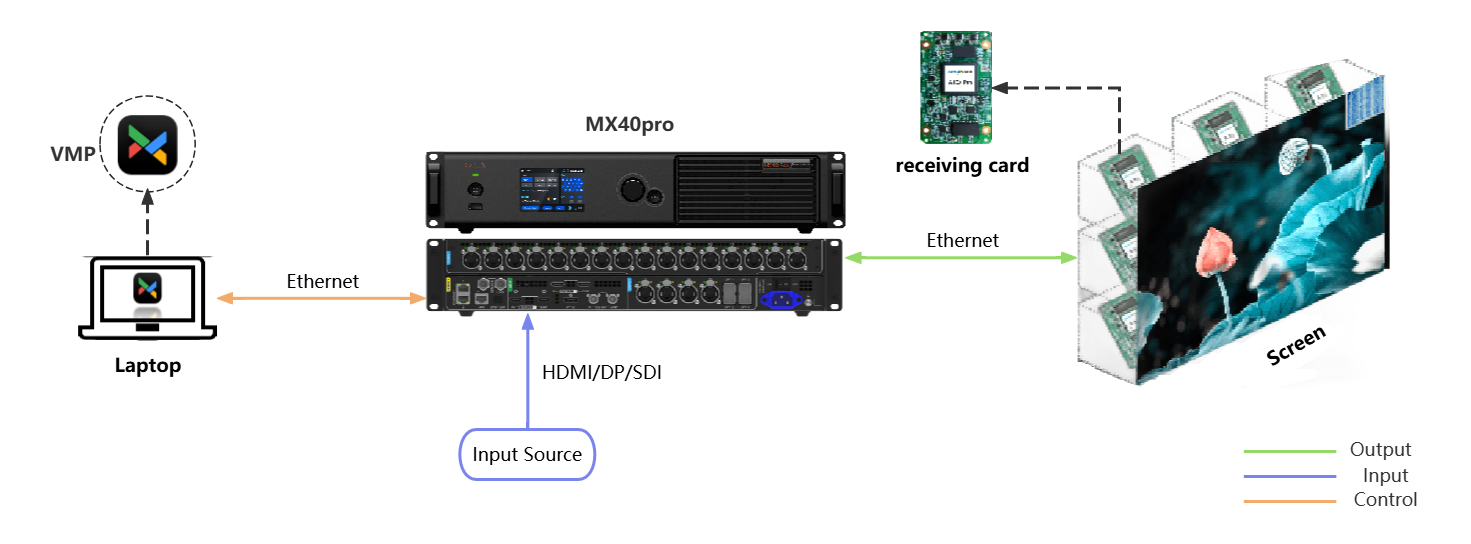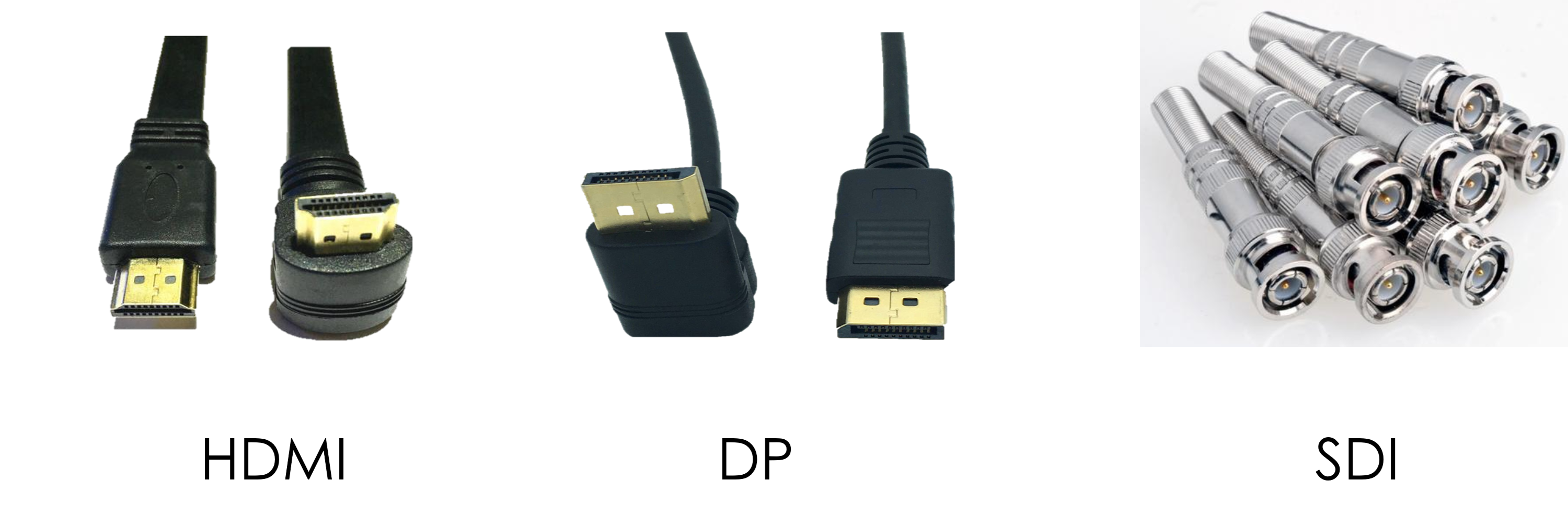¶ Basic Structure of LED Display System

¶ Constituent Devices of the LED Control System
¶ Module/Panel/Tiles
The module is the smallest unit in the LED cabinet. If we take a close look, we can easily find out the module structure.
The module consists of LED Beads, PCB(Printed circuit board), Power supply connector, and ICs (including driver IC and decoding IC). They work together under the command of the LED control system to achieve the LED on/off and show different images on the LED screen).
¶ Cabinet
An LED cabinet consists of several modules arranged according to certain rules. There is a receiving card and a hub board inside the cabinet connected to the LED module through flat cable.
¶ Receiving Card (RV Card)
In an LED control system, a receiving card is a crucial component responsible for receiving signals from the sending card or controller and converting them into control signals to drive the LED display. The main functions of the receiving card include signal reception, processing, data distribution, and display control. It ensures that each module of the LED display shows the correct image and video content by adjusting parameters like brightness, color, and refresh rate.
¶ HUB Board
Hub board, an important component in LED display screens, usually designed by the screen manufacturer, is mainly used for connecting data transmission between receiving cards and modules. It distributes the signals output by the receiving card to multiple modules through an interface, thereby achieving the display of images or videos.
Hub boards typically support multiple types of interfaces to ensure that different types of LED modules can be connected to the same control system. Its efficient signal transmission and stable performance are crucial for ensuring the image quality and reliability of LED displays.
¶ All-in-One
The all-in-one LED integrates the power supply, Hub board, and receiving card into a single unit. This design simplifies installation and maintenance and reduces the number of separate components. The power supply ensures stable voltage and current, the Hub board handles data distribution from the control system to the LED module, and the receiving card processes and transmits image data to the screen. This integrated design improves system reliability and efficiency, and also, provides screen manufacturers and customers with more possibilities for cabinets design in small-pitch application scenarios.
¶ Introduction to Cables and Interfaces
¶ Video Cables

¶ Ethernet Cable and Fiber Cable
We consistently enhance and refine the content of our Wiki articles.
If you find any mistakes or errors, please contact us.
Your continuous feedback and support will help us further improve our products and content.